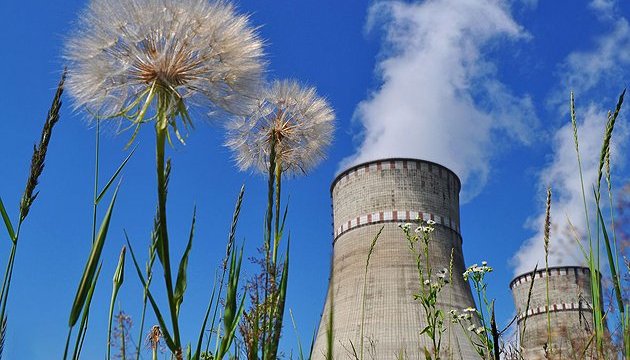УДК 550.4 • Issue 3 (31) / 2020 • 100-111 pages
Stych O.I., Kuraeva I.V., Koshliakova T.O., Pastushchak Ya.I.
Stych O.I., graduate student, M.P. Semenenko Institute of geochemistry, mineralogy and ore formation of the National Academy of sciences of Ukraine, oksana.stich@gmail.com, https://orcid.org/0000-0002-5831-6652
Kuraeva I.V., D.Sc. (Geol.), head of department, M.P. Semenenko Institute of geochemistry, mineralogy and ore formation of the National Academy of sciences of Ukraine, KI4412674@gmail.com, https://orcid.org/0000-0003-3113-7782
Koshliakova T.O., Ph.D. (Geol.), senior researcher, M.P. Semenenko Institute of geochemistry, mineralogy and ore formation of the National Academy of sciences of Ukraine, geol@bigmir.net, https://orcid.org/0000-0001-8551-3531
Pastushchak Ya.I., graduate student, M.P. Semenenko Institute of geochemistry, mineralogy and ore formation of the National Academy of sciences of Ukraine, slavirus1994@gmail.com, https://orcid.org/0000-0002-3098-2979
Abstract
The article presents the results of complex studies of soils and vegetation of the protected territories of Ukraine regarding the content of trace elements (Pb, Cu, Zn, Y, Ba, Cr, Ni, Mn, Co, Mo) in them on the example of the Pyriatynskyi National Nature Park. The following environmental objects were studied during the work: Soils – light gray light-humus soils, typical low-humus chernozems on forests, black-soil ash-podium humus, sod-podzolic soils; vegetation – alder (Бlnus), European spruce (Pнcea бbies), sedge thinner (Carex chordorrhiza), sedge rye (Carex secalina). Based on the physicochemical methods of investigation (atomic absorption, spectral, mass spectrometry with inductively coupled plasma), regularities of distribution of the basic forms of being of trace elements were revealed, as well as their mobile forms depending on the physical and chemical properties of the protected soil. The determination of the forms of being of heavy metals in soils was carried out by the method of step-by-step extractions. Granulometric and X-ray phase methods were applied to determine the mineral composition. For the study area, dependencies between the detected forms of heavy metals in soils and fractions of soil humus were established. The migration ability of mobile forms of heavy metals in the soil-vegetation-animal-human trophic chain was evaluated from the standpoint of the potential buffering ability of chemical elements in soils. It was concluded that the patterns of distribution of heavy metals in the soils of the study area are due to their physical and chemical properties, mineral-geochemical parameters of soil-forming rocks, as well as landscape and technogenic conditions. Based on the obtained data, it was established that the studied area can be considered pure, unpolluted by heavy metals, and the results presented in this article are of practical scientific importance in terms of establishing background concentrations of trace elements in the environment of man-made contaminated territories.
Key words: soil, heavy metals, environment, forms of finding, migratory capacity.
Article
Reference
- Kryuchenko, N.O., Zhovinsky, E.Ya., Paparyga, P.S. (2018). Ore and geochemical anomalies of the protected theories of the Ukrainian Carpathians (on the example of the Carpathian Biosphere Reserve). Kyiv, 148 p.
- Zhovinsky, E., Kuraeva, I.V. (2002). Geochemistry of heavy metals in soils of Ukraine.Nauk. Dumka, Kyiv, UA, 213 p.
- Galatsky, L.S., Egorova, T.M. (2008) Regional ecological-geochemical analysis of the influence of heavy metals of industrial waste on the state of the environment of Ukraine, Environmental Ecology and Life Safety Journal, N 5, pp 10-14
- Zhukov, M, Klypa, A., Makarenko, M. (2012). Probabilistic estimation of environmental pollution on the basis of modeling of chemical element content distributions (on the example of surface waters of Poltava region). Visnyk of Taras Shevchenko National University of Kyiv : Geology. V. 58. pp. 52-57.
- Rudenko, L.G. (2010). On the critical ecological status of the components of nature in the regions of Ukraine, Ukrainian Geographical Journal, N2, pp 60-68.
- Soil quality. Sampling. Part 2. Guidance on sampling methods: DSTU ISO 10381-2: 2004 (ISO 10381-2: 2002, IDT) . (2006) Gosstandatt of Ukraine, 10 p.
- Soil quality. Sampling. DSTU 4287: 2004. (2005) Gosstandart of Ukraine, 10 p.
- Samchuk, A.I. (1998). Physicochemical conditions of formation of mobile forms of toxic metals in soils. Mineralogical Journal. (Ukraine). 20(2): 48-59.
- Krupsky, N.K., Polupan, N.I. (1979) Soil’s atlas of the Ukrainian SSR, Kyiv, pp. 30-57
- Arinushkina, E.V. (1970) A guide to chemical soil’s analysis, Moscow, 487 p.
- Dolin, V.V., Smirnov, V.N. (2011). Technogenic and ecological safety of the biogeosystem of the Bug estuary in the conditions of heavy metal pollution, Kyiv-Nikolaev.
- Abduloeva, O., Karpenko, N. (2015). Prevalence of phytoinvasions in the vegetation cover of the Pyriatyn National Nature Park, Visnyk of Lviv National University : Biology. V.69, pp. 191-201
- Rimak, A.I., Nagornyi, O.I. (2013) The nature of the Pyriatyn Region, Myrhorod, 190 p.
- Samchuk, A.I., Ponomarenko, O.M. (2010). Analytical schemes of microwave decomposition of rocks and minerals and their determination of micronutrients by inductively coupled plasma mass spectrometry. Ukrainian chemical journal 76(10), pp. 115-121.
